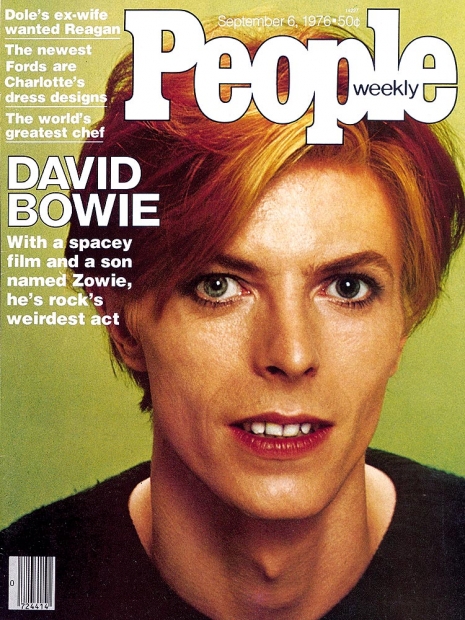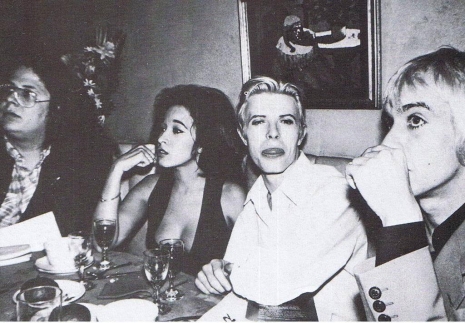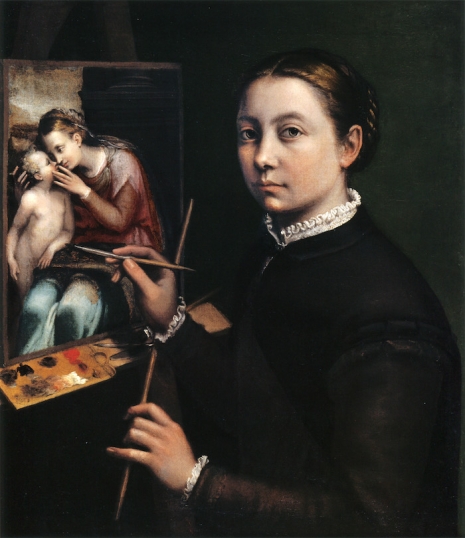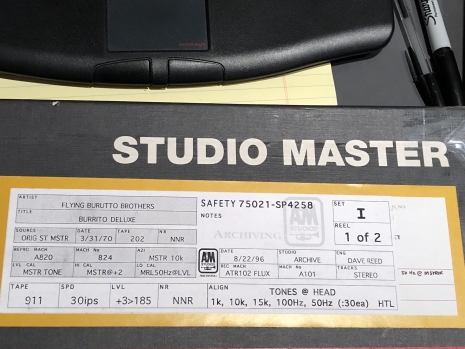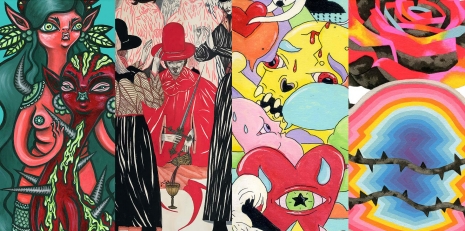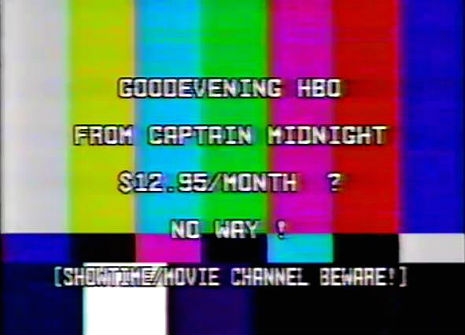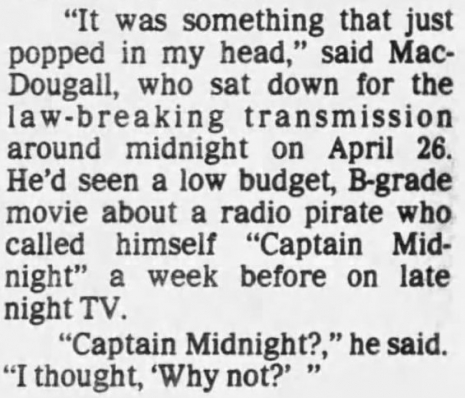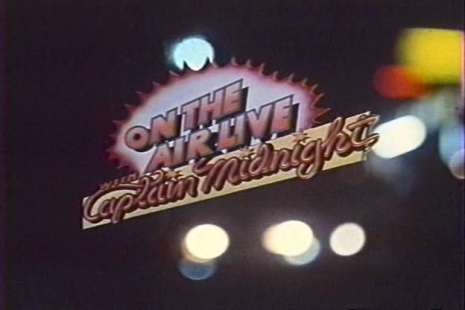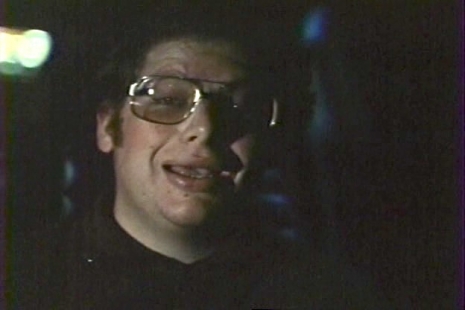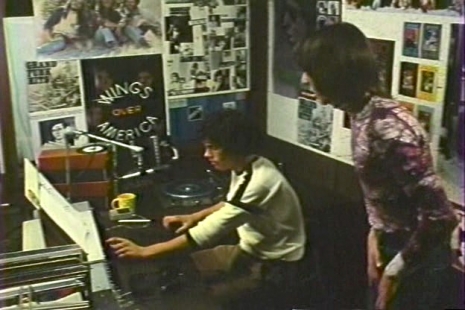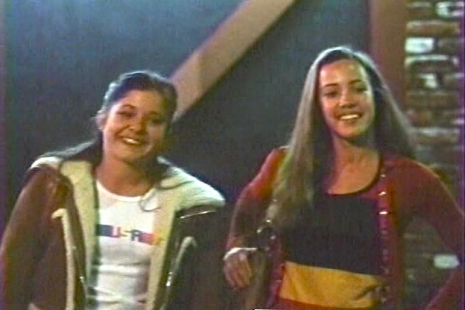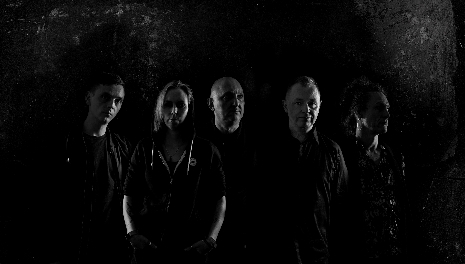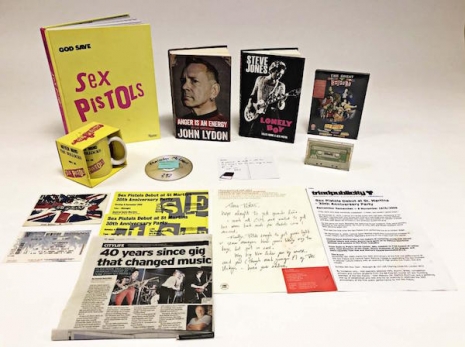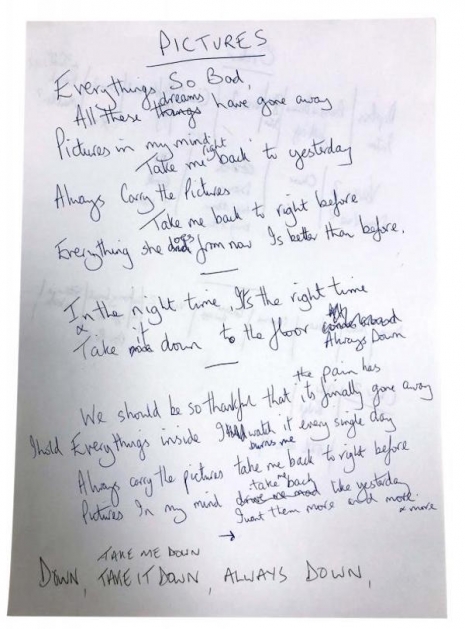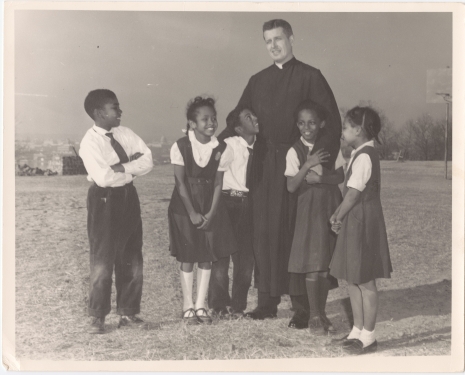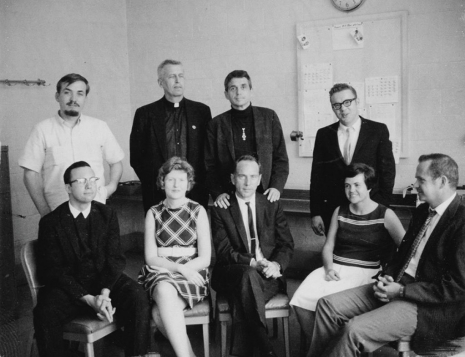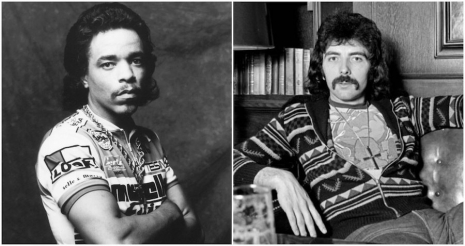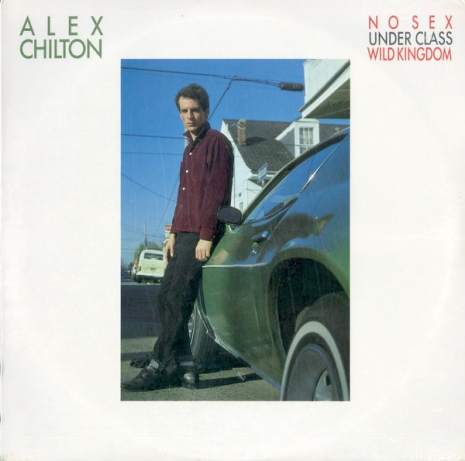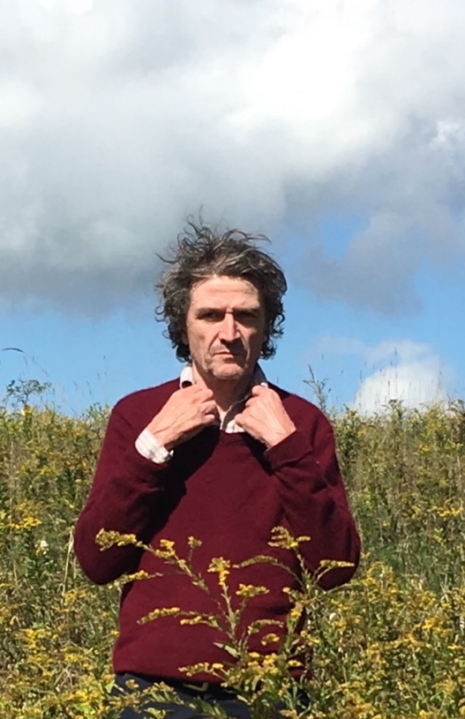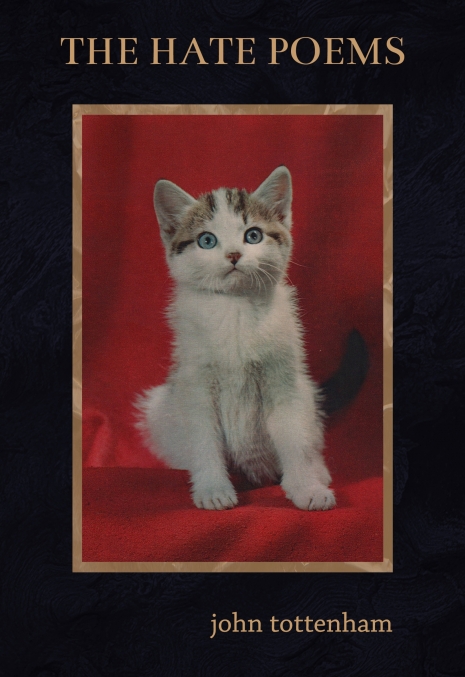
Anni Hogan by Peter Ashworth
There is, I suppose, an almost sort of secret society comprised of the most ardent admirers of Torment and Toreros, the harrowing 1983 Marc Almond solo album released under the name Marc and the Mambas. It’s a cult album, to be sure, but with a seriously passionate fandom devoted to it. If I meet someone who likes this album—not that this happens all that often, but I consider it a variant on the Illuminati handshake for rock snobs—they immediately rise in my opinion. Fellow fans of that album—obviously—have great taste in music, which is something I correlate closely with high intelligence. In fact, everyone who I know who has expressed a fondness for this album, I tend to be very fond of myself. It’s a masterpiece—a singularly bleak vision put to sensuous and violent song—although admittedly not for everyone.
Fans of that album tend to be partial to a handful of other Marc Almond albums recorded in the 80s—Mother Fist and Her Five Daughters, The Stars We Are, the first Mambas album Untitled—and are very well aware of the fact that Almond’s main musical collaborator on these records was classically trained pianist/arranger Annie Hogan, who now goes by Anni Hogan.
Hogan’s contributions to those albums are of a paramount importance to their greatness. If you tried to subtract her playing from them, they simply couldn’t have existed. The sound of her grand piano on those albums is stunning, and distinctly and very uniquely her own. It couldn’t have been anyone else in her role and worked as well as it did, not in this universe or any other. Her style was the perfect accompaniment to Marc Almond’s wonderfully idiosyncratic voice. That they had a falling out and have not worked together in decades, in my eyes, is, and I am not alone in this, truly a damned shame.
But Hogan’s musical journey has seen her collaborate with other notable voices, and prominent musicians along the way, among them Nick Cave, Yello, Robin Rimbaud/Scanner (as Scanni), Barry Adamson, Budgie, Jim Thirlwell, Kraftwerk’s Wolfgang Flur and Simon Fisher Turner. It’s worth noting that as I typed that last sentence I realized I had all of these in my record and CD collection. I have considered Anni Hogan to be one of my favorite musicians for over three decades; if she’s involved with something, I want to hear it.

Anni Hogan by Peter Ashworth
And now she’s back with an extraordinary new album, Lost in Blue (Coldspring Records) featuring new collaborations with Lydia Lunch, Gavin Friday, Kid Congo Powers, Kraftwerk’s Wolfgang Flür and Richard Strange from 70s cult band Doctors Of Madness. The album was produced by Dave Ball and Riccardo Mulhall. It’s released on March 8th, although vinyl copies signed by Anni can be ordered here now. I posed a few questions to Anni via email.
Richard Metzger: Anni, you’re best-known for your celebrated collaborations with the other half of Soft Cell, but this time you’re working with Dave Ball. How did that come about?
Anni Hogan: I’ve known Dave the same amount of time as Marc Almond and we have remained friends for nearly 40 years! I’d chatted with him over the past few years about doing something together and we eventually met up at a pub in Soho, which actually became the album meeting place, The Coach and Horses, where I promptly tripped and spilled his pint all over him, perfect! We laughed a lot and so I knew then this was going to work, we still had tons in common including our sense of humour, and of course our passion for music and music related books. A couple of pizzas later and we had a plan. I knew I wanted to make a really good record and from my heart rather than going through someone else’s remake as it where. Dave is a genius anyway, but a generous and understanding old school producer. He felt it was his job to elevate my musical ideas, we share a love of soundtracks and I wanted that shape around the album. Dave had his own ideas to make this work, including working the main musicians as a band, and a adding electronics, orchestra, etc. where needed.
It seems like in each case the singer wrote the words they are singing. Generally speaking how did the songs become composed and how did the recordings get made? I would imagine that the circumstances were different for each song. Was the album recorded over a long period of time?
The whole album was recorded mainly over two years, although I did already have a couple of demos from a few years earlier. I had sent a piano piece to Kid Congo a few years ago and he sent back his wonderful autobiographical adventure in spoken word Kid drawl, which totally worked great against my Bernard Herrmann-influenced piano which I recorded on my baby grand in my own Studio Blue. I kept it to one side and did the same with Wolfgang Flür, I had already made the song “Golden Light” with him after we met djing at the same event in Dublin, incidentally Dave Ball was also at that event, we all dj’d and destiny was in motion. Of course I was a much better DJ and I remember Dave was like laughing and calling me “bitch!” when I mixed all my tracks seamlessly, haha, It was a funny night.
Anyway I digress, I sent Wolfgang a piano piece, very emotive and he sent back to me the spoken word “Silk Paper” over the piano. Sounded gorgeous and perfect. Again, I kept it to one side and similarly I had a song which I recorded with Richard Strange in London a few years previously, at the time I was house DJ for him at his fabulous weekly night Cabaret Futura. I had given him a rough demo and we recorded vocals and trumpet in London. So I had these three tracks and late in 2015 began writing some new material.
I got in touch with Lydia and sent her over a piano and melodica piece which she responded to “I love it” and “Blue Contempt” came from that. I had not intended to sing anything myself, but after meeting up with David Coulter in Liverpool, he sent me a beautiful, hypnotic viola piece and I immediately heard a vocal melody and had a few words which seemed to fit so I went for it. My friend of many years—and top sound engineer Andrea Ando Wright—came over to my studio and recorded piano and melodica to David’s violetta and then I said I wanted to try a vocal. She wrapped me up in quilts and cushions, pillows and more quilt and we got the desired effect.
I don’t usually record vocals at my place. “Thunderstruck” came from a dark place of devastation an instant emotional response on the day Jo Cox MP was horrifically murdered, both the music and lyric came out as one. So I would basically write and pre-produce and then send down to the studio in Richmond, owned by Dave’s production partner Riccardo Mulhall and they worked on tracks whilst I wrote the others.
I went to London for the physical recording, so for the horns and harp and some backing vocals. Dave suggested Gavin which was a brilliant idea as was bringing in 1970s legend John Fiddler from Medicine Head and the writers Scarlet West and Celine Hispiche. I wrote the music for them to then respond to, it was a very challenging and interesting aspect of recording to write for people I had not yet met, but did do research on. Most of the vocals were recorded in London but Gavin wrote and recorded his epic love poem (with a vast array of backing vocals) to a fairly complete demo I sent over. The real magic happened in production I think, bringing all the songs to full potential and the boys created a wonderful resonant album “sound.”
I’ve always felt that Lydia Lunch is an underrated singer. She’s got such an instantly recognizable voice—when she opens her mouth there is no one else it can possibly be—and that sort of bleak, Erik Satie-esque dreamscape you’ve got her singing to works spectacularly well, I thought. You can really hear the nuances in her voice.
“Blue Contempt” is a sensational recording, and I agree, underrated and oozing visceral edgy coolness forever. Queen Of Siam and 13.13 are two of my favourite albums. Queen Of Siam particularly blew me away when I first heard it in the 80s and still does. Jasmine Hirst actually filmed Lydia on the day she wrote the lyric and the video was equally sensational with Lydia looking gorgeous as ever. Dave and Ricc were excited to work on the track and enhanced the delicious “Lynchian” film vibe.
I think her prodigious cigarette smoking has given her voice a greater depth as she’s gotten older, like Marianne Faithfull’s, and that’s also true of Gavin Friday. I understand that he’s a pretty heavy smoker, too. These wonderfully smoky voices. Obviously he’s worked with Dave as a producer in the past, on the final Virgin Prunes album, so it was Dave who brought Gavin into the project?
Yes, sure was, Dave suggested Gavin early on when we were chatting about the album. Of course I’m a Virgin Prunes fan, saw them live several times and love Gavin’s solo stuff. Dave suggested I particularly listen to his ‘95 solo album Shag Tobacco (which is brilliant!) as a reference and that helped me find a way into a piece for Gavin. It turned into quite the epic!
I wasn’t expecting Wolfgang Flür’s contribution to be vocal. I guess I was expecting him to be playing drum pads or something!
Well he is rather well known for that : ) But yes we explored his performed written word for the tracks we have recorded together. Previously we recorded “Golden Light” and he loved it so much he included it on his album Eloquence and Wolfgang has encouraged me ever since we have become friends. “Silk Paper” was seductive little prose which worked so well against my semi classical piano piece and then production enhanced along the way.
How did you coax Richard Strange back into the studio?
Well it wasn’t difficult: I asked, he said yes : ) Richard is a gorgeous, giving guy, very talented and very open. He was very encouraging actually and wrote and delivered a great lyric and performance in “Death Bed Diva,” an intricate camp tale of faded glory. I love it.
I wanted to ask you about Celine Hispiche. Her voice is so striking. I loved the lyrics where she’s mentioning famous drinkers at the Colony Room and lamenting what’s become of Soho. It seems like that could be an entire concept album on its own, a lost London lament, if you will.
Yes, the regeneration of our famous old cities and the life fading out of them and turning into something corporate and just much less. A lost London lament but it could be equally talking about New York or any other major old city. Celine is a wonderful character, a talented writer and actress, a bohemian figure at the center of Soho life. She painted a perfect picture of the London we all knew and loved, our 80s haunts all but gone now. The album was certainly planned in Soho and Dave and I did a tour of all our old haunts on the fateful “spilled pint” day.
The album factored in to the artists involved and our combined musical histories and many cities did feature in a way, all being regenerated as we speak, Liverpool (my nearest city) London, Dublin, New York ..
Having collaborated with so many iconic voices is there a “dream” collaboration that you’d like to see happen in the future?
Françoise Hardy I listen to practically every day so that’s a secret special desire. I would love to work with Stuart A. Staples and Claire Denis as I love his music for her films and I love her films, they are a beautiful combo and seeing Tindersticks film performance in Liverpool inspired my melodica playing on my album. Scott Walker still inspires me, his latest musical ventures really challenging textually, visions of wonder and artistic truth. Beth Gibbons is also an artist I love to listen to and respect very much … there’s a lot more I’m sure!
What happened to your “e”?
Hahahahaha, well there is a photographic artist Annie Hogan who I have actually become friends with, anyway seemed easier to drop the e, less confusion.
Lost in Blue is released on March 8. You can order signed CDs and limited edition blue vinyl here.
Videos after the jump…
